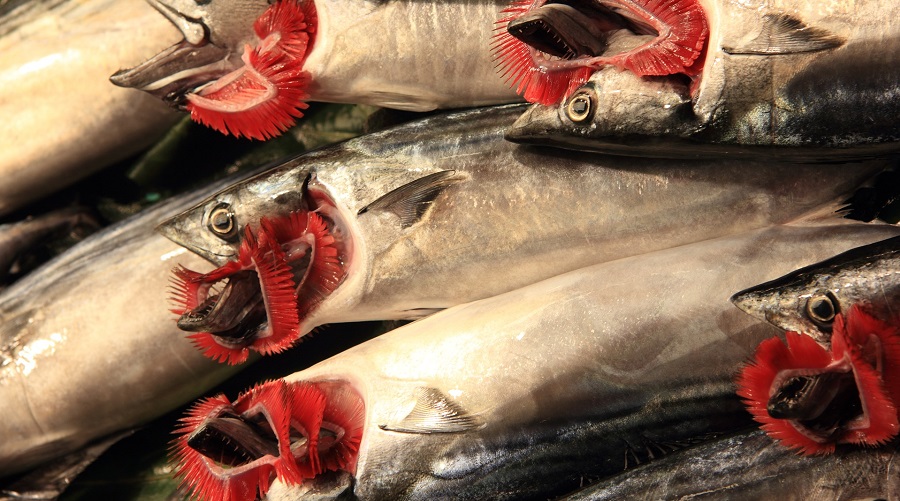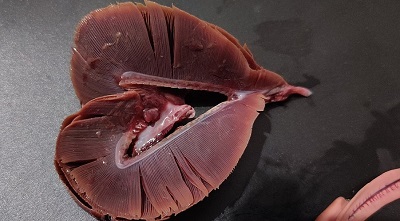
Fish gills. Image by 2427999, Pixabay.
The distribution and concentration of dissolved oxygen and water temperature in the oceans and freshwaters are usually far more influential in shaping the growth and reproduction of fish than the distribution of their prey.
In a new paper in Science Advances, Daniel Pauly, principal investigator of the Sea Around Us initiative at UBC’s Institute for the Oceans and Fisheries, argues that scientists need to avoid attaching human attributes to fish and start looking at their unique biology and constraints through a different lens.
This lens is Pauly’s own Gill Oxygen Limitation Theory (GOLT), which explains many features of fish biology and whose core principle is that as fish grow, the surface area of their gills – their respiratory organs – can’t keep up with the oxygen requirement of their bodies.
The GOLT emphasizes that gills are surfaces through which water must flow – a bit like the wind through blinds. Gill surface area grows in two dimensions, that is, in length and width, but they cannot keep up with bodies that grow in three dimensions, length, width and also depth. Thus, as fish get bigger, they have less gill surface area and their gills provide less oxygen per unit volume or weight.
“The problem is that many colleagues fail to understand the basic geometry of gills, and argue that, as fish grow bigger and, thus, require more oxygen, they can just grow larger gills,” Pauly said. “But they can’t pack their heads full of gills because, if that were to happen, water wouldn’t be able to flow through.”

Fish gills. Image by Krishna satya 333, Wikimedia Commons.
Pauly’s research indicates that the gill issue is a constraint, not something fish can evolve out of. This means that once their gills reach a point where the oxygen they supply cannot support a bigger body, they stop growing.
“This is particularly important in the context of climate change because warm waters contain less oxygen. This means that gills have less oxygen to supply to bodies that require more oxygen at higher temperatures”, Pauly said, “This double whammy occurs because fish cannot maintain their body temperature constant, and higher water temperatures accelerate their metabolisms.”
Higher temperatures force fish to stop growing at a smaller size, given the little oxygen available to them. This has important implications for fisheries and aquaculture.
Despite having many applications, the GOLT has been the subject of criticisms. In the new paper, Pauly responds to these challenges point by point.
“In contrast to regular scientific papers, the ‘data’ here are published arguments against the GOLT and their counterarguments, presented in table form. These arguments are not serious; they are more like barnacles on the hulls of a boat, which slow it down but do not sink it”, Pauly said. “They are based on a lack of understanding of key geometrical and biological concepts. Thus, it was important to clear them out so that the GOLT can start to be seriously studied, and its real problems addressed.”
The fact that the Gill Oxygen Limitation Theory is mainly qualitative and makes few quantitative predictions, is one of the real problems that Pauly himself has noticed and would like his colleagues to address, as well as the fact that it doesn’t deal with bioenergetics and the role food plays in the life of fish.
“Food is necessary for life and the GOLT is structured around the notion that there is enough food but what if there isn’t enough food? The relationships between food and oxygen will have to be studied, too,” he said.
The paper “The Gill Oxygen Limitation Theory (GOLT) and its critics” has been published in Science Advances DOI: 10.1126/sciadv.abc6050.
To schedule interviews with Daniel Pauly, please contact Valentina Ruiz-Leotaud v.ruizleotaud[at]oceans.ubc.ca


